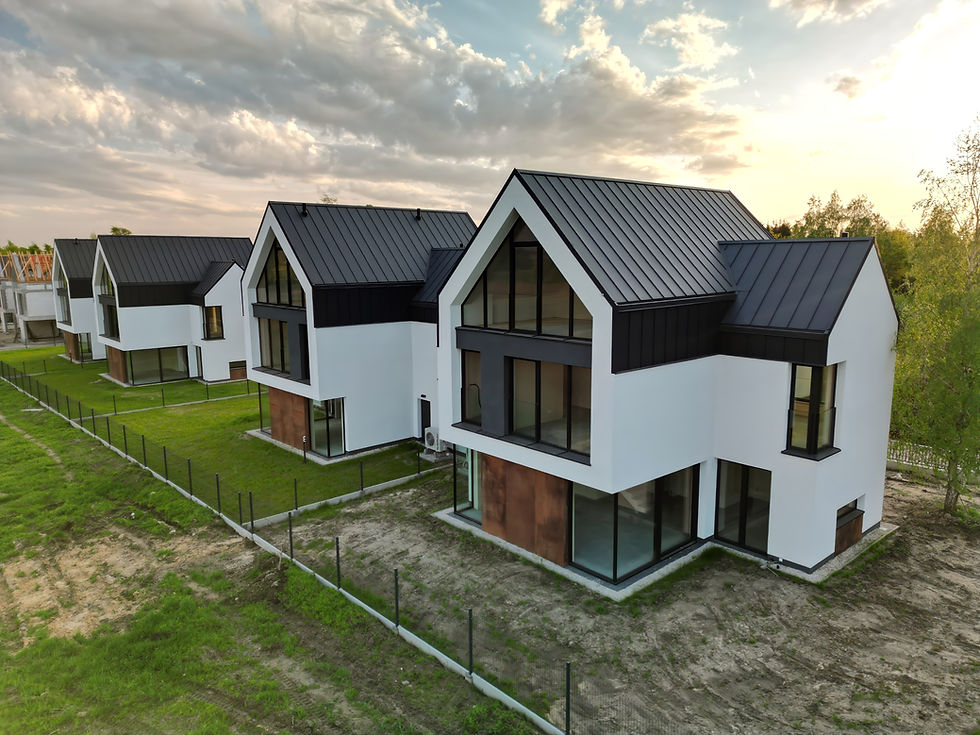Nature-led commercial campus with integrated SuDS and landscape engineering
REFEA supports the delivery of commercial developments where sustainable drainage, biodiversity, and low-carbon design are embedded from the ground up.

%20Strategy%20(7)_edited.png)
Nature-based SuDS
%20Strategy%20(7)_edited.png)
Landscape-led design
%20Strategy%20(7)_edited.png)
Low-carbon structure
The opportunity with these sites is to design systems that do more than just meet regulations - they support biodiversity, manage water naturally, and create spaces people actually enjoy being in. SuDS isn’t just drainage; it’s part of how we shape healthier, more resilient places to work and live.
Ben Norman
Civil Engineer
REFEA provides civil and structural engineering support for commercial campuses where sustainability and landscape design go hand-in-hand. In this type of project, we work with clients and design teams to develop integrated SuDS strategies, low-carbon structures, and site layouts that promote water management, ecology, and long-term performance.
Our civil engineering input includes rain gardens, swales, green roofs, and attenuation ponds that manage surface water naturally while enhancing biodiversity and amenity space. We design external levels and access routes to work with existing landforms, reducing excavation and supporting future maintenance.
Structural design focuses on lightweight, energy-efficient construction - often using MMC, timber or hybrid frames to reduce embodied carbon and accelerate programme. Our early involvement ensures sustainability is part of the site’s infrastructure, not just the architecture.

Focus Areas
REFEA’s work is guided by six core principles that drive sustainable structural and civil engineering - turning practical design decisions into low-carbon outcomes across East Anglia.
Reuse First
Prioritising existing structures and materials to reduce waste and embodied carbon.

Early Design Collaboration
Involving engineers early to embed sustainability from concept to construction.

Low-Carbon Materials
Specifying materials with lower embodied carbon and designing for material efficiency.

Circular Design Thinking
Designing for adaptability, longevity, and future reuse from the outset.
%20Strategy%20(3)-min.png)
Integrated Drainage Solutions
Embedding SuDS into civil engineering for sustainable, climate-resilient developments.

Practical Sustainability
Delivering buildable, cost-conscious solutions that meet real environmental targets.

Sustainable
structures

east anglia
As structural engineers, we have a unique opportunity to influence how the built environment responds to the climate crisis. Reuse isn't just about saving materials - it's about rethinking value, preserving what works, and designing with long-term resilience in mind. Through REFEA, we hope to make reuse a more practical and achievable option on projects across East Anglia by sharing knowledge, highlighting viable approaches, and supporting early-stage design decisions.
Mark Weston
Structural Engineer, JMS Engineers
Knowledge is key to sustainable change. Explore our latest insights and technical resources:

Path to a Low-Carbon Built Environment
The built environment contributes nearly 40% of global carbon emissions, much of it through construction and materials. In East Anglia, reducing embodied carbon is critical to meeting sustainability goals. By reusing structures, designing efficiently, and integrating low-impact civil solutions, we can reshape how the region builds - and lead the way towards a net zero future.


%20Strategy%20(1)_edited.png)









